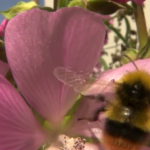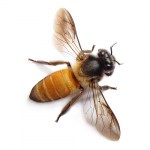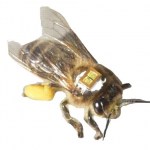honey bee
Bioscience for the future has an update o the bee situation in Europe.
Europe has 13.4 million too few honeybee colonies to properly pollinate its crops, according to new research from the University of Reading.
The discovery, made by scientists at the University's Centre for Agri-Environmental Research (CAER), shows that demand for insect pollination is growing five times as fast as the number of honeybee colonies across Europe as farmers grow more insect-pollinated oil crops, such as oilseed rape and sunflowers, and fruit.
Click here to read all about it.
Here's a video:
Published on Jan 8…
We recently discussed news from the EU on banning neonicotinoid pesticides in order to stem the so called Colony Collapse Disorder (CCD) among honey bees. Bug Girl has an important guest post on the phenomenon of CCD by bee expert Doug Yanega. This is a must read not only for those interested in bees and CCD, but skepticism and science reporting in general, as Yanega places the current discussion in a strong historical context and provides a valuable critique of much of the reporting on CCD. Go read Honey bees, CCD, and the Elephant in the Room.
______________
Photo Credit: wildxplorer via…
A commonly used insecticide, and possibly an increasingly widely used form of that pesticide, could be a causal factor in bee colony collapse. It is not 100% certain that this pesticide's effects can be counted as one of the causes this problem, but there is a very good chance that neonicotinoids can cause a drop in hive population, and thus, should be examined to see if there is a relationship in some cases. From the paper's abstract:
Nonlethal exposure of honey bees to thiamethoxam (neonicotinoid systemic pesticide) causes high mortality due to homing failure at levels that could put a…


